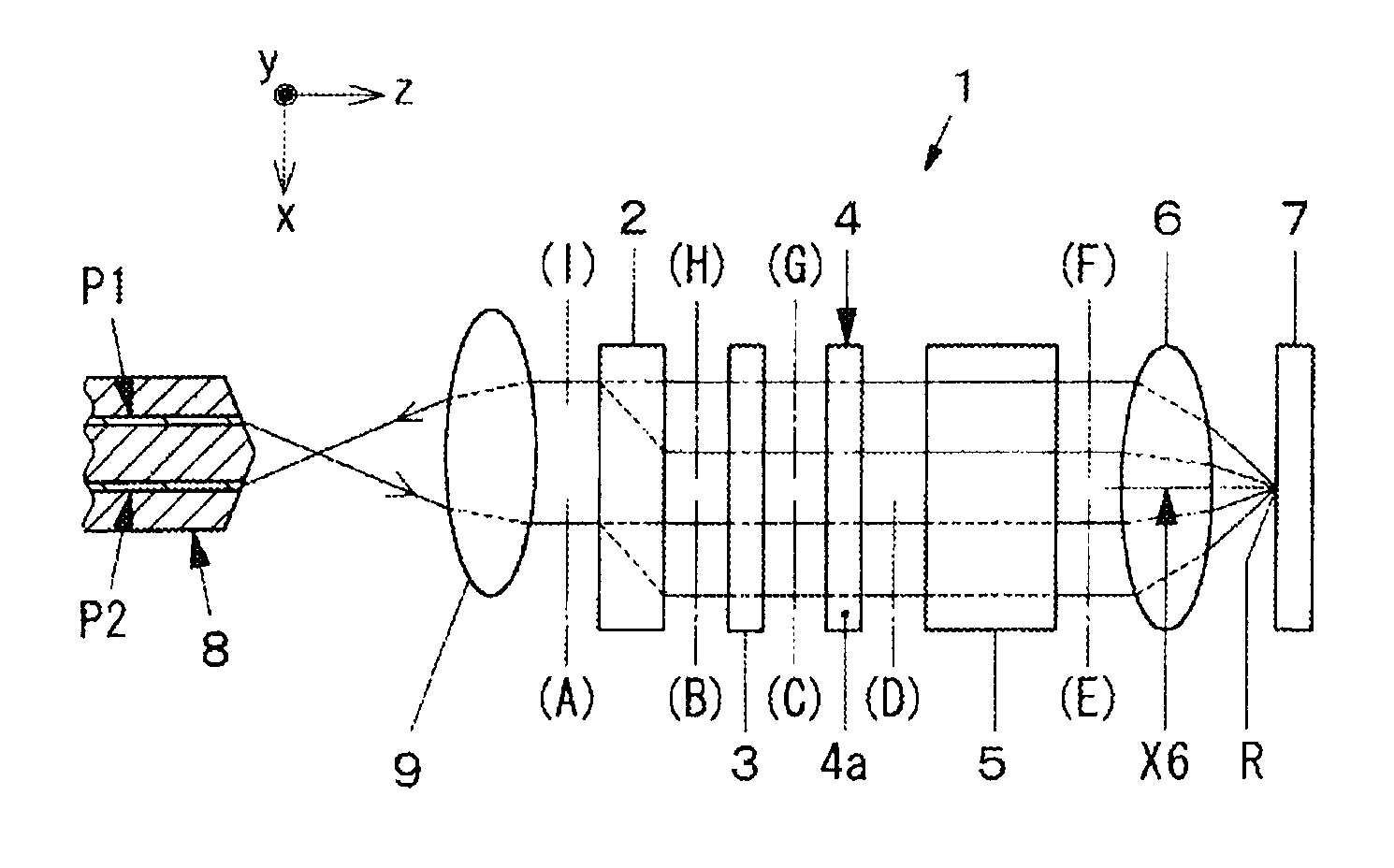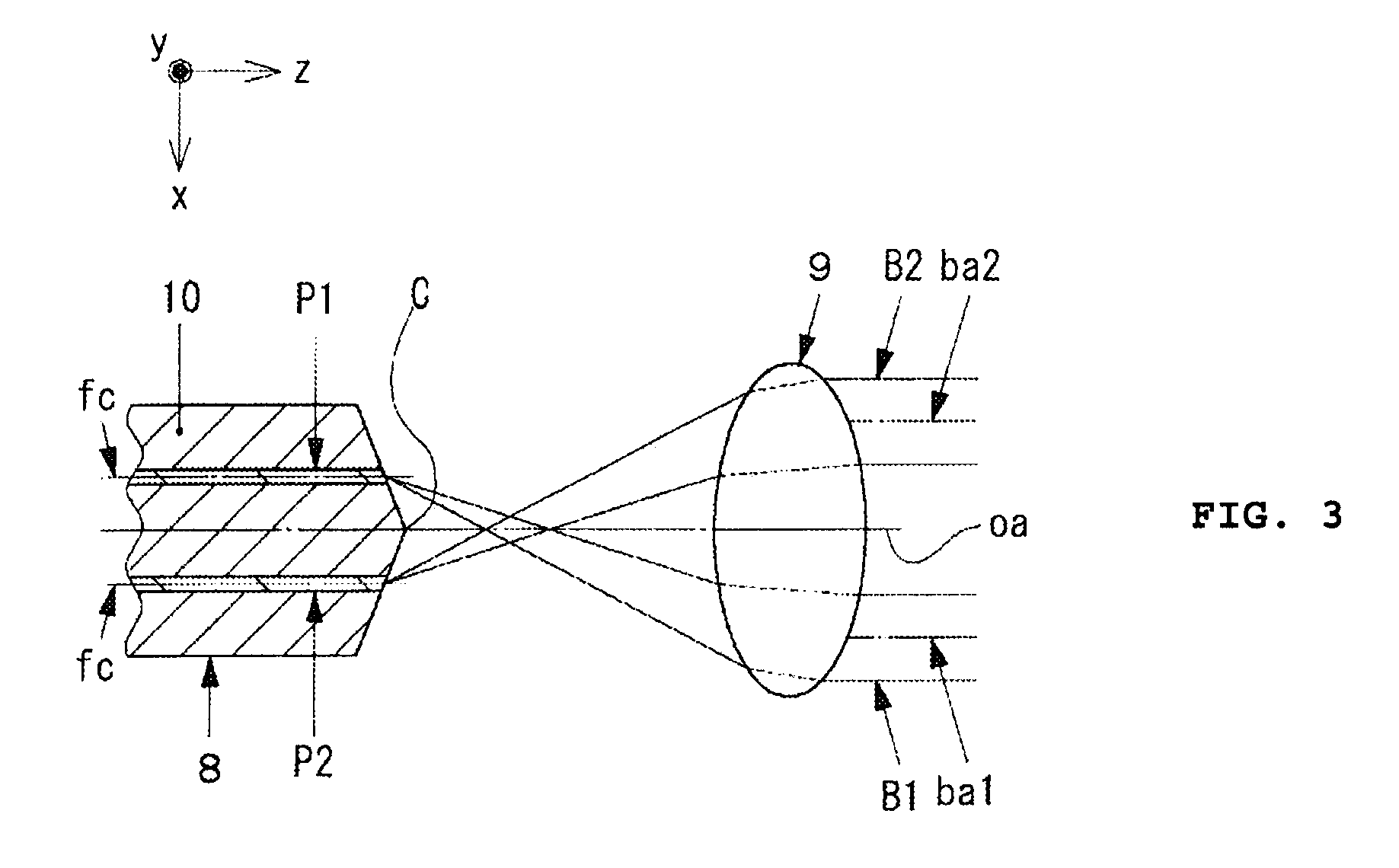Reflective optical circulator
a circulator and optical technology, applied in the field of optical circulators, can solve the problems of large size difficult to implement the optical circulator having multiple ports, and inability to meet the requirements of the optical circulator, so as to prevent the non-uniformity of the insertion loss of each reciprocating optical path in the optical circulator, stabilize the insertion loss, and prevent the occurrence of pdl
- Summary
- Abstract
- Description
- Claims
- Application Information
AI Technical Summary
Benefits of technology
Problems solved by technology
Method used
Image
Examples
Embodiment Construction
[0053]Hereinafter, best mode embodiment of optical circulators according to the present invention will be described in detail with reference to FIGS. 1 to 14. In each figure, x-axis to z-axis correspond to those of each figure. In FIGS. 1 and 2, the light propagating direction is denoted by the z-axis, horizontal and vertical directions in a plane perpendicular to the z-axis are denoted by x-axis and y-axis, respectively. FIGS. 1 and 2 illustrate the constitution and layout of each of optical elements from the light incidence / emission unit 8 to the reflector 7 of the optical circulator 1. Optical paths where the light passes through internal portions of each of the optical elements are indicated by dashed lines, and the other optical paths are denoted by solid lines.
[0054]As shown in FIGS. 1 and 2, the optical circulator 1 according to the present invention includes an optical element unit having a first polarization separating element 2 (hereinafter, referred to as a polarization s...
PUM
 Login to View More
Login to View More Abstract
Description
Claims
Application Information
 Login to View More
Login to View More - R&D
- Intellectual Property
- Life Sciences
- Materials
- Tech Scout
- Unparalleled Data Quality
- Higher Quality Content
- 60% Fewer Hallucinations
Browse by: Latest US Patents, China's latest patents, Technical Efficacy Thesaurus, Application Domain, Technology Topic, Popular Technical Reports.
© 2025 PatSnap. All rights reserved.Legal|Privacy policy|Modern Slavery Act Transparency Statement|Sitemap|About US| Contact US: help@patsnap.com



